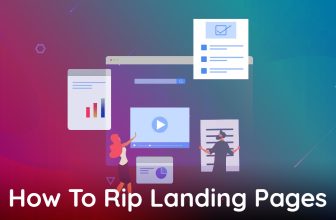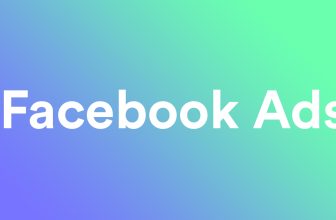
Did you know that the average Facebook user brings in over $32 in revenue? Now, the big question is: How can you ensure you’re getting your piece of the pie?
Luckily, for small businesses like yours, the solution isn’t always about throwing more money into the mix. Sometimes, the key lies in scaling your Facebook ads the right way. This means tweaking your content or trying out new target audiences to see what works best.
Sure, there are times when increasing your budget is necessary, but even small budget boosts can pack a punch if you allocate your funds wisely. Facebook ads have the potential to deliver impressive returns on investment, so it’s all about making the most of what you’ve got.
TABLE OF CONTENTS:
What Is Scaling?
So, you’ve dipped your toes into the world of Facebook ads. They did alright, but you have a feeling they could do even better. Then, a colleague mentioned something about “scaling your ads,” and you couldn’t help but wonder if it involved climbing mountains or catching fish.
But don’t worry! Scaling Facebook ads isn’t as daunting as it sounds. It’s basically about taking your top-performing ads and tweaking them to squeeze out even better results. There are two main ways to go about it.
Vertical Scaling
Here’s the “spend money to make money” approach. You pump more cash into the ads that are already working well, and they’ll reach a bigger audience.
But here’s the trick with vertical scaling: go slow and steady. Suddenly pouring in a ton of money can mess with Facebook’s algorithm. It can mess up your data and how efficiently the platform uses your funds.
Horizontal Scaling
The other type of scaling is horizontal. Instead of messing with your budget, you mess with your audience targeting or ad creatives to reach more people or make a bigger impact.
Horizontal scaling needs even more patience than vertical scaling, but it can really pay off.
Why You Need to Know How To Scale?
Once you figure out how to scale Facebook ads, you can keep your existing ad campaigns going strong for longer. This means you won’t have to keep starting new Facebook ads from scratch to see results.
Scaling lets you build on what’s already working, analyze how your campaigns are doing, and use what you learn right away.
But moving beyond the “what” and “why,” let’s dive into the “how.” Here are a couple of methods you should try:
Increase The Budget
Facebook ads vertical scaling is the simplest method to boost your ads’ performance. But when should you consider scaling and investing more money into your campaigns?
When your ROI is high
While ad impressions contribute to brand awareness, customer engagement through clicks, likes, follows, and email subscriptions is crucial for long-term business success. It’s important to monitor these social media performance metrics.
However, when it comes to paid advertising, you should assess it differently. Base budget decisions on Facebook ad metrics. If campaigns aren’t yielding a positive return on ad spend (ROAS), they aren’t viable.
To calculate ROAS, divide the amount spent on a Facebook ad campaign by the revenue generated from those ads.
When your Ad Frequency is low
As viewers see ads repeatedly, their impact diminishes. Instead of bombarding your audience, aim to engage and excite them.
Moreover, the dynamics shift when retargeting the same audience. Each impression incurs a cost, so the more impressions a customer receives, the higher the cost per customer.
Use Auto Rules
Maximize your budget using Facebook’s automated rules. Save time and money by letting the platform handle the optimization of your ad scaling.
Configure automated rules to trigger specific actions based on predefined conditions. You can set limits, pause campaigns, or boost budgets for ad sets performing successfully.
Expand Your Target Audience
Occasionally, you might discover hidden potential among your audience, with potential fans just waiting to be uncovered. If your ad is performing well, consider expanding its reach to a wider audience.
Experiment with different approaches like changing your location settings to cater to remote customers. You can also explore new demographic factors or target different interests and behaviors to tap into previously untapped markets.
Create Lookalike Audiences
Google Ads and Facebook Ads operate differently when it comes to audience targeting. Unlike Google Ads, which target user searches, Facebook Ads enable you to reach a specific audience and even discover more individuals resembling your top customers through look-alike audiences.
To start, create a custom audience comprising individuals who have shown interest in your product or service. You can gather data from various sources like your website, customer databases, email lists, and Facebook itself. Additionally, you can tailor your audience based on specific behaviors, such as the duration they spent watching a Facebook video.
After establishing your custom audience, you can create a look-alike audience on Facebook by specifying the location and size. You have the flexibility to choose a percentage ranging from 1 to 10, with 1 representing the smallest audience that closely resembles your original.
It’s essential to note that smaller look-alike audiences often result in higher returns.
Refresh Your Creatives
Sometimes, it’s necessary to refresh your creatives to combat ad fatigue and gauge audience response effectively.
In addition to altering visuals, consider experimenting with different offers or promotions. Compare results between providing a flat discount, bundling products, or offering a BOGO deal.
Vary your call-to-action as well. Instead of pushing for an immediate purchase, use your Facebook ads to collect leads. Encourage viewers to sign up for your newsletter or loyalty program. By integrating paid advertising with email marketing, you can invest in building lasting relationships with customers.
Where Should You Start Scaling?
Now that you understand the contrast between vertical and horizontal scaling, the advantages of ad scaling, and the process of scaling Facebook ads, you’re equipped to elevate your advertising efforts. Strategically boost your budget, experiment with different content or audience targeting, and leverage Facebook’s tools to maximize your spending efficiency.
Prepare to accomplish more with your existing resources. Start by assessing your current or previous campaigns. Determine if they meet the criteria for vertical scaling and if you have the additional funds to invest. If not, explore the various horizontal strategies and pick one to implement.
Conclusion
In conclusion, scaling Facebook ads is a powerful strategy for optimizing your advertising efforts and maximizing your return on investment. Whether you choose vertical scaling to increase your budget or horizontal scaling to refine your targeting and creatives, the key is to continuously evaluate and adapt your approach based on performance metrics.
By leveraging Facebook’s tools and experimenting with different strategies, you can effectively reach and engage your target audience while optimizing your advertising budget. Keep testing, refining, and iterating to achieve ongoing success with your Facebook ad campaigns.







